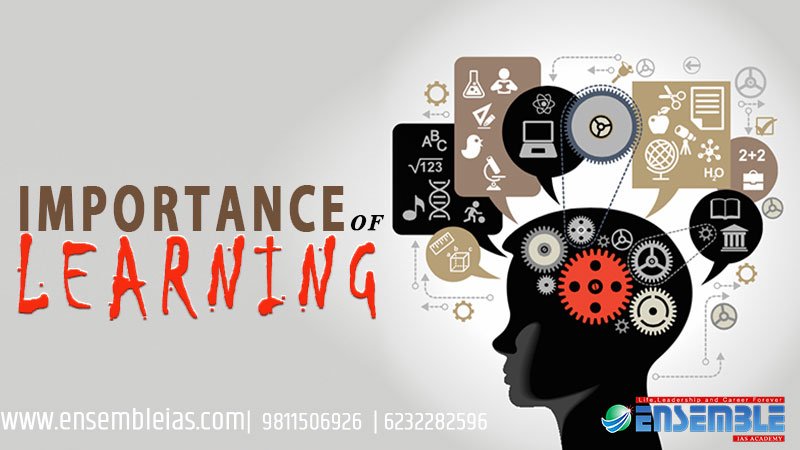 Importance of Learning : If children enter school without requisite competencies, learning gaps develop early and grow over time.
Importance of Learning : If children enter school without requisite competencies, learning gaps develop early and grow over time.
The early years, defined globally as age 0-8, are known to be the most important stage of cognitive, motor, social and emotional development in the human life cycle. Inadequate access to developmentally appropriate inputs and environment during the “early years” not only affects children’s ability to cope with school, but can also have lifelong implications.
In 2015, the United Nations articulated the importance of early childhood development by including it in its Sustainable Development Goals (SDG). It states: “By 2030, ensure that all girls and boys have access to quality early childhood development, care and pre-primary education so that they are ready for primary education.” In India, too, as early as 1975, the Integrated Child Development Scheme (ICDS) was introduced to provide food, pre-school education, and primary health care facilities to 0-6 year children and their mothers.
However, until recently, there has been a clear separation between pre-school and school education policy. Pre-school education, primarily administered through ICDS, comes under the purview of the ministry of women and child welfare, while school education comes under the ministry of human resource development under the ambit of the Right to Education (RTE). It was only in 2018 that pre-primary education was integrated with the rest of school education under the Samagra Shiksha Abhiyan. Finally, in 2019, the draft National Education Policy (NEP) proposes to provide “free, safe and developmentally appropriate care and quality education to all children in the age group of 3-6 years by 2025”. The final draft of the NEP is likely to be tabled soon in Parliament.
Therefore, it is an apt time to examine the evidence we have on access and quality of ECE in India. Are children enrolled in pre-primary schooling? Are they exposed to developmentally appropriate pre-primary curricula so that they are ready for school? Do they graduate to school at the appropriate age? These are some pertinent questions, answers to which would help guide framing priorities and goals for the new education policy.
Since 2005, the nationally representative Annual Status of Education Report (ASER) has reported on enrolment and learning of 5-16-year-olds. While 3-4 year-olds are not assessed in ASER, it does record their schooling status. According to the latest ASER (2018), almost 30% of 3-year-olds are not enrolled in pre-school, but by age 4, this number halved to 15%, and by age 7, all but 2% are enrolled in either school or pre-school. On the face of it, these figures look fairly innocuous, but if we dig a little deeper, it throws up an interesting story.

First, children do not seem to follow the linear trajectory suggested by policy. Most states mandate that children enter grade 1 at age 6; the RTE covers age 6-14 and ICDS 0-6 years. But children seem to be entering school earlier and earlier. According ASER 2018, 27.6% children in grade 1 were 5 years or younger, and at the other end of the spectrum, 26% of 6 year olds and 10% of 7-year-olds were still in pre-school.
Visit our store at http://online.ensemble.net.in
Second, the government pre-school system is slowly losing out to the private sector that keeps children longer in pre-school and exposes them to school-like curricula even before they have entered school. The India Early Childhood Education Impact (IECEI) study, conducted in three states of Assam, Rajasthan and Telangana found: “…at the time of school entry, most children’s school readiness levels are far below expectations. From ‘multi-tasked’ anganwadi centres’ to ‘demand-driven’ private preschools, the quality of preschool education is not developmentally appropriate for children.”
View our Blog: https://ensembleias.com/blog/
If children enter school without the requisite competencies to deal with what the curriculum expects from them, it is not surprising that learning gaps develop very early and grow over time. This is confirmed by ASER data, which shows that a large proportion of children in primary classes are unable to read and do basic arithmetic. For instance, in 2018, 21.3% of children in grade 2 could not recognise letters, and 14.9% children could not recognise numbers from 1 to 9.
So, while there is some information on what children in these early years are doing, there is not much evidence available on scale on what they are learning. This year, ASER 2019 will focus on the early years of 4-8 years. The “Early Years” ASER will give a national picture of the schooling status of children in this age group. It will focus on selected competencies identified by international research as important predictors of future success: early language acquisition, pre and early numeracy skills, cognitive abilities, and socio-emotional learning. A national-level survey that gives evidence on scale on the school readiness of our young children will hopefully feed into, and contribute to, the ongoing policy discussions and drafting of the new education policy.
Source: Hindustan Times | Written by: Wilima Wadhwa
For more details : Ensemble IAS Academy Call Us : +91 98115 06926
Email: [email protected] Visit us:- https://ensembleias.com/
#children #school #education #Importance_of_Learning #geography_optional #upsc2020 #ias #k_siddharthasir #Government_of_India #india #studyabroad #geography #upsc #government #news #dailynews #gk #dailyquiz



